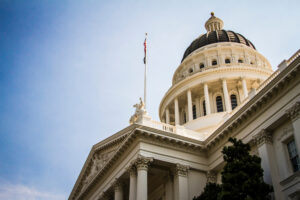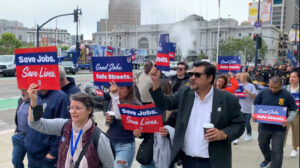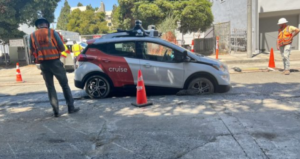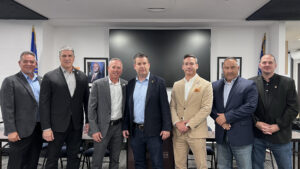Teamsters on Robots: If You Can’t Beat ’em, Build ’em
January 19, 2018Source: Bloomberg Law
Organized labor as a whole is staring down the barrel of automation, but Teamsters in Silicon Valley have found a way to get a shot at jobs in the tech industry.
Manufacturers are gearing up to send delivery robots onto sidewalks, and cities are developing regulations to control sidewalk traffic when the bots are ready to roll. Some California cities have agreed to include in those regulations provisions that encourage the robot makers to hire unionized workers for jobs in the industry.
San Francisco and Berkeley are including union-friendly language in ordinances so Teamsters get a shot at the growing robotics labor pool, Doug Bloch, political director for the Teamsters Joint Council 7, told Bloomberg Law.
Unions typically criticize automation as detrimental to fair wages and stable jobs, but the Teamsters’ initiative in California reveals a nuanced attitude toward the future of organized labor. Low-paid workers that typically have large union representation, such as cashiers, drivers, and food service workers, face the most risk of being replaced by machines.
Robotics represents “technology that could complement existing workers jobs rather than compete with them,” Bloch said.
Seeking Good Jobs Amid Automation
The Berkeley ordinance is being written with an eye toward creating “a template that could be modeled for the rest of the country in finding ways to ensure that people have good jobs in the age of automation.” That’s according to Ben Bartlett, a city councilman who worked closely with the Teamsters to launch the robot permit program.
The Teamsters worked on the San Francisco ordinance with a robot-powered delivery company in the city called Marble. The company agreed not to put up a fight when the Teamsters try to unionize their future robot manufacturers, Bloch said.
The San Francisco law, passed in December, requires companies like Marble to prove they’ve considered potential labor disputes before getting a delivery permit. Critics of the regulation says it gives the San Francisco government too much discretion to decide what counts as a labor dispute.
What that proof entails is intentionally vague, Bloch says. A city can’t force companies to be unionized in order to get a permit, but it can encourage labor harmony. “One sure-fire way to have labor harmony is to have unionized workforce,” Bloch said.
The Berkeley program is more specific, Bartlett told Bloomberg Law. He wants the permit system to specify a position designated for a unionized “robot handler.” Bartlett is also encouraging his council colleagues to give companies with unionized workers priority over other businesses.
The Berkeley City Council still needs to create a final draft for the robot permit program, but Bartlett anticipates it will be finalized in the next three months.
Critics Say Pro-Union Provision Adds Costs
Critics of the union-friendly provision say it will add unnecessary costs for businesses, particularly small businesses, trying to enter the robot delivery market.
“The permitting process imposes costs in and of itself and then the union can now interject itself in that process automatically,” Eric Steinert, a partner at Seyfarth Shaw LLP based in San Francisco, told Bloomberg Law. The San Francisco regulation doesn’t mention unions specifically, but Steinert sees problems with the vague language of the ordinance. The union could argue that any company without a bargaining unit could have unforeseeable labor disputes down the line, he said, and that might be enough for the local government to deny a company its permit.
Steinert called it “no secret” that San Francisco supervisors are “very friendly” with the unions. “This is a way the unions can interject themselves into the process of the permit approval,” he said.
Future Is ‘Brave New World’
One professor isn’t surprised the Teamsters have warmed up to some aspects of automation, despite organized labor’s traditional stance against anything driving automation.
“It’s a brave new world in terms of the ways the services are going to be delivered,” Francis Ryan, who teaches labor history at Rutgers University said. “The Teamsters historically have been a very innovative union in terms of its ability to integrate new technologies,” he said.
Take the union’s logo, for instance. It features two horses, representing the Teamsters’ drivers who steered horse-drawn carriages before cars were invented, Ryan said. The union was able to transfer its representation from horse drivers to auto drivers, so its pivot to include robot manufacturers and operators isn’t that surprising, he said.
Of course, that doesn’t mean unions should view the future through rose-colored glasses.
“The fear of robots is not blown out of proportion, there’s clear indication that jobs are lost to automation,” Ryan said.
But Bloch sees the Teamsters’ role as one of an equalizer. He wants to organize the robot manufacturers, technicians, and mechanics and show that robotics has something for blue-collar workers, too, “not just venture capitalists.”
To contact the reporter on this story: Jacquie Lee in Washington atjlee1@nullbloomberglaw.com
Copyright © 2018 The Bureau of National Affairs, Inc. All Rights Reserved.





